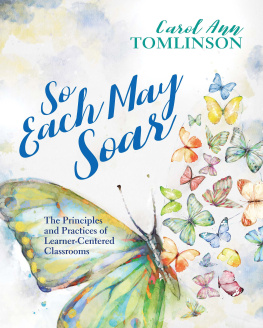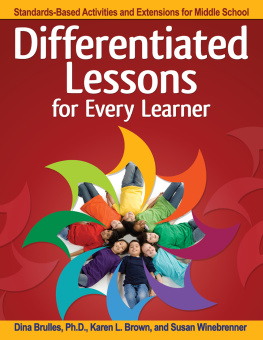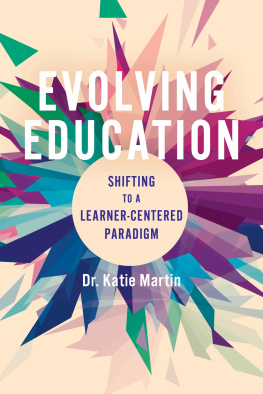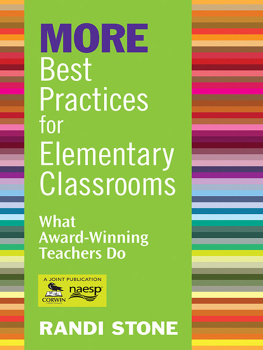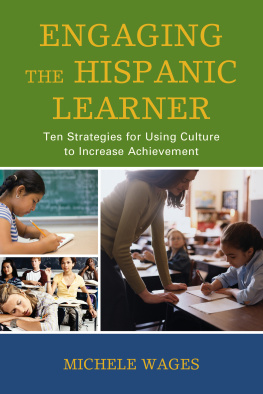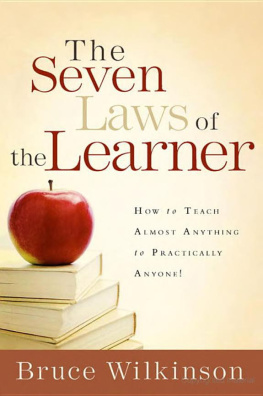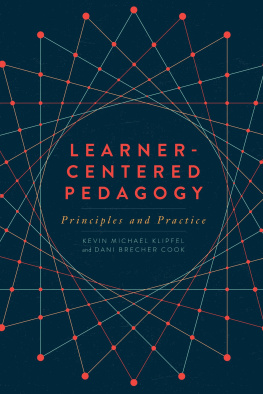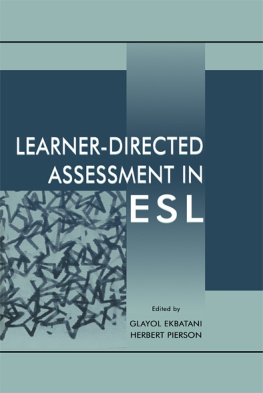Contents
Guide
Pages for So Each May Soar
Dedication
....................
For colleaguesteachers, administrative leaders, authors, and researcherswho have been, and continue to be, my mentors by word and example.
For studentsfrom 3 years old to 80+ years oldwho have allowed me to teach them and, in that exchange, have shown me what matters most profoundly in teaching and learning.
For friendspast and presentwho give shape and meaning to everything.
And for Katie Martin, whose depth and artistry as an editor and as a human being seem always to lead her to understand what I'm trying to say more fully than I do. Thank you for bringing light and lightness to the solitude of writing over many years.
Preface
....................
To know how much there is to know is the beginning of learning to live.
Dorothy West in The Richer, The Poorer
Writing has been central to my life for as long as I can remember.
I was an only child, and from early on, writing was a way to fill vacant time. It allowed me to create imaginary kingdoms that I might otherwise have conjured with a brother or sister in the backyard. It helped me figure out the world around me absent the kind of clarifying combat-and-condolence offered by siblings. By the time I reached high school and then college, writing was a way to test and refine my ideas through the filters of my teachers, with whom I was far too shy to carry on a face-to-face conversation.
For me, serious writing always has a pain-to-pleasure ratio. Sometimes the pleasure, or at least a kind of satisfaction, clearly outweighs the struggle. Sometimes, it's a wrestling match with words and ideas, with just enough faint rays of delight to keep me going. I never know at the outset, of course, what the pain-to-pleasure ratio will be.
The novelist George R. R. Martin has concluded that there are two kinds of writers of fictionarchitects and gardeners. The architects plan everything ahead of time. They know how many rooms are going to be in the house, what kind of roof there's going to be, where the wires will run, what kind of plumbing they'll use. They have the whole thing designed and blueprinted out before the first board is nailed into place. The gardeners, by contrast, dig a hole, drop in a seed, water it, and wait. They kind of know what seed it isif they planted a fantasy seed or mystery seed, or whatever. But as the plant comes up and they continue to water it, they don't know how many branches it's going to have; they find out as it grows (cited in Flood, 2011). Martin explains that he, himself, is a gardener.
There's a parallel in nonfiction writing, at least in my experience. Sometimes as I begin writing, I know the "punchline," the theme, the big ideaand I have a relatively clear sense of the steps that can lead to the big idea. That functions like a plotline for me. While there are absolutely fits and starts and changes of direction along the way, the theme and line of logic I envision act as a compass that generally keeps me on course. In those settings, I write as an architect, knowing what the structure needs to look like and crafting a blueprint that will get me where I was sure from the outset I needed to go. In other instances, I begin with a sort of ideafuzzy, perhaps, but still promisinga seed that I plant and tend along the way. In those instances, I write more as a gardener, and I plow a lot of mud as I go. Over time, and in a generally stepwise fashion, however, I can see the seed sprout, grow, and ultimately appear worthy of harvest.
This book has turned out to be a different sort of writing journey. I began with what I thought was at least a seed and probably a line of logic as well. After many months and several drafts of the first few chapters of three different versions of a book, I realized the seeds were not seeds after all, and the line of logic wasn't actually logical. Here's a brief (at least relative to the length of the journey) history, which is only worth sharing because it brought me to the chapters that follow, and because it may be a thought journey that other educators take as well.
Round 1
It all began about three years ago. My initial intent was to explore the similarities and differences between differentiation, which has been the focus of much of my career, and "personalization," which was just beginning to populate the literature of education. After months of reading, study, and reflective note taking, I was bogged down by the fact that personalization is defined in so many ways that it almost defies analysis. That was made more problematic by expert conclusions that (1) differentiation and personalization are the same, (2) differentiation is a kind of personalization, and (3) personalization is a kind of differentiation. To complicate things further, there was a body of writing on technology-based "personalization"a whole different breed of animal. In the end, I found so many misconceptions about differentiation that, combined with the amorphous "consensus" on both human-centered and tech-driven personalization, I had neither a blueprint nor a garden.
Round 2
My second foray into making a book happen was similar to the first in that I thought I had both a seed and a line of logic. By this point, I had decided that there was no meaningful difference between differentiation rightly understood and personalization, so long as I cast personalization as the means of generating greater student ownership of and agency in learning and excluded from consideration both the kind of personalization achieved through technology and iterations of personalization that seem more focused on "whatever the student wants" than on meaningful learning.
Once again, I was stymied by enormous variety in how personalization has been depicted. It's been cast as mastery learning, as a way to raise test scores, as "anything-anywhere-anytime" learning, and as the mechanism of small schools. It's been characterized as inquiry, as project-based, as Genius Hour, and as the outcome of community engagement. It's been explained as making sure all students have access to the same materials and as ensuring that students can select materials with which they want to work. I thought a great deal about the reality that differentiation looks quite different in a teacher-directed classroom than it does in a classroom where students are partners in design and decision making. I pondered how personalization would morph among project-based, mastery-based, inquiry-based, and test-focused classrooms. Maybe, I concluded, what I really wanted to write about was how our definition of curriculum necessarily shapes how we think about instruction.
Round 3
By this time, I had concluded that it would be more useful to potential readers for me to abandon the differentiation/personalization comparison or alignment and instead write about what it might look like to create classrooms in which students not only have considerable voice in their learning but also find reliable support to grow in autonomy and agency. That was going reasonably well until I had a rather embarrassing epiphany, which might better be characterized as a grave lapse of awareness. I realized some distance into manuscript 3 that I was essentially the "blind man" describing one piece of the elephant.
I am a true believer in creating classrooms where students are at the hub of decision making, where students and teachers function as a team to make the classroom as effective as possible for as many members of the classroom as possible. I am a career-long, dues-paying subscriber to innovation in classrooms. And I believe fervently that making standardized test scores the measure of our effectiveness as educators was an uninformed, costly, and near-catastrophic mistake insofar as it reduced the realities of the young human beings in our classrooms to data points. But I also know in both my brain and my bones that we cannot be the educators we want to be, or help learners become the people they dream of being, by adding a new emphasis, a "new" strategy, to our current practice, which in the test-prep era, seems scarcely concerned with quality in the first place. We have to regain our sight, I finally realized, and deal with the whole elephant. And I needed to do that, too.

